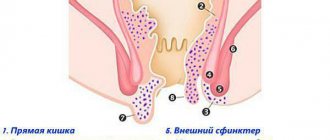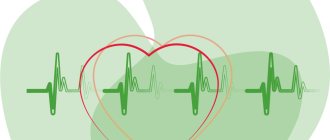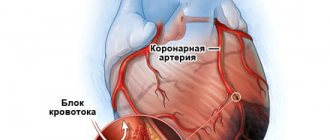The norm is considered to be a general body temperature of +36 to +37°C. A periodic decrease to +35.5°C is possible with hypotension, hypothermia and some infections. Usually this condition normalizes on its own over time. But there are situations where hypothermia is very dangerous.
Nervous and physical exhaustion
High physical activity, prolonged stress, lack of sleep, poor diet and strict diets often lead to a deficiency of the body’s energy resources. As a result: metabolism slows down, blood circulation slows down and the temperature drops below normal by 1-2 degrees. The pathological condition is accompanied by significant weight loss, apathy, weakness, fatigue, depressed mood or increased nervous excitability. There may be frequent headaches and decreased mental abilities. The person becomes distracted and inhibited. There is a weakened immune system and hypovitaminosis.
With physical and nervous exhaustion, body temperature steadily decreases to +35–35.5°C. The condition is accompanied by chills even in warm weather. This pathology is usually not life-threatening, but it is an alarming sign that requires urgent lifestyle changes.
Temperature with vegetative-vascular dystonia
What to do if you feel a “temperature condition”, but without signs of a cold? You should take your temperature to see if there is any cause for concern.
What temperature is considered low-grade?
If it exceeds 37, then action should be taken, and if not, then it can be ignored. Most people's idea of elevated and normal temperature differs from the medical norm. A temperature several tenths higher than 37 degrees is considered low-grade and is a common symptom of VSD.
Should I be concerned if my temperature is slightly elevated?
The presence of elevated temperature cannot be left without attempts to find out the cause. If it does not exceed 37C, then this is considered normal, but if it is slightly higher than this figure, then it is considered low-grade. In “dystonics” it is a frequent occurrence and varies from 37.1 to 37.5C. Higher numbers indicate that this symptom is no longer related to the above disease.
Causes of elevated temperature during VSD
With VSD, temperature instability occurs, and the figure can change quite often during the day. The cause of this disorder is a deviation from the normal functioning of the thermoregulatory zone in the brain. Ensuring the same body temperature depends on it, that is, independent of external conditions. The failure occurs due to increased production of the hormone adrenaline, and there are frequent surges of its off-scale level, occurring due to little things that cause ordinary people to not have such amounts of this hormone. This is just one aspect of the pathologies of the autonomic system in VSD.
However, to more accurately identify the cause of this disease, you should undergo an examination and take tests that a specialist will prescribe. Based on their results, he will make a diagnosis, which will clarify the situation by confirming or denying the presence of other diseases that cause an increase in body temperature. If no such diseases were identified, then most likely the cause is vegetative-vascular dystonia.
Features of temperature during VSD
It should be borne in mind that this phenomenon in vegetative-vascular dystonia has its own distinctive features. One of them is her promotion, as some would say, because of all sorts of nonsense. For example, this could be physical activity, or even a state of rest. It is curious that it can return to normal if you just lie down or fall asleep, with a short rest being enough. Most likely, this is because in sleep it decreases a little for everyone.
Abnormal temperature with vegetative-vascular dystonia may not disappear for years. It usually appears in the morning and decreases at night. If it increases after any type of physical activity, then this indicates the presence of VSD. You should not overuse antipyretic drugs, as this does not eliminate the underlying cause, but it is quite possible to “earn” gastritis. At times it may fall below normal, but this is not a cause for concern as it will later rise to normal.
Is low-grade fever dangerous during VSD?
In general, no, but all these fluctuations are by no means healthy. This instability leads to two more violations. One of them is hyperhidrosis, that is, excessive sweating that occurs in a calm state, for no reason. The second consequence is that a person feels cold all the time, even in the warm season, not to mention the cold season. This is especially true for limbs, which get cold even with gloves and insulated shoes.
Is it possible to get rid of this trouble, which is one of the symptoms of vegetative-vascular dystonia?
In principle, there is no particular cause for concern. If this really bothers you, then you can take medications from time to time, but not antipyretics, but sedatives. Author: K.M.N., Academician of the Russian Academy of Medical Sciences M.A. Bobyr
Post-viral syndrome
In this case, the body temperature usually stays around +35.5°C or +35°C for several days. In the fight against infections, the body spends a lot of internal resources, suffers from the consequences of intoxication and microbial aggression, which is why many functions, including thermoregulation, are disrupted. The early period of recovery is often accompanied by a decrease in temperature. The condition is accompanied by other symptoms: physical weakness, bad mood, drowsiness, decreased concentration. Shortness of breath may occur, worsening with exertion and stress. Children, adolescents, and people with chronic vascular and central nervous system diseases are susceptible to pathology.
Possible reasons
There are various reasons for the rise in temperature and drop in pressure. All of them can be combined into two categories: physiological and pathological.
The first group is represented by the following factors:
- Severe anxiety, lack of sleep, nervous tension. Such conditions can lead to disruption of thermoregulation and surges in blood pressure.
- Heavy physical activity. When playing sports, heat transfer increases. Physical fatigue can lead to a decrease in tonometer numbers.
- Pregnancy. Low-grade fever and hypotension are some of the first signs that a child has been conceived.
Often the symptoms of low blood pressure and high temperature do not have a clear cause. The thermometer readings are influenced by various internal factors. The vascular and immune systems, water-salt balance, and endocrine organs take part in the process of regulating heat exchange.
The pathological causes of the combination of hyperthermia and hypotension are:
- ARVI, flu. When such conditions develop, fever and low blood pressure are often observed. The high temperature is caused by the reactions of the immune system, the fight against the virus. Hypotension is explained by the fact that with influenza, ARVI, an intoxication state occurs.
- Deficiency of blood volume circulating through the vascular bed. The patient experiences bradycardia, severe weakness, dizziness, and loss of appetite. Similar symptoms are characteristic of low blood pressure and high temperature.
- Hormonal imbalance associated with improper functioning of the thyroid gland and adrenal glands.
- Liver and kidney failure. Such diseases lead to severe intoxication of the body.
- Cardiac problems.
- Pathologies of the nervous system, hematopoietic organs.
- Vitamin deficiency. It manifests itself as a violation of thermoregulation, a general decrease in body tone.
- Bleeding. When body fluid is lost, pressure drops. If there is an infectious-inflammatory process, the temperature will be elevated.
- Incorrect combination of medications.
- Insufficient hemoglobin level.
To determine the cause of hyperthermia and hypotension, you need to undergo a series of diagnostic procedures and consult a doctor.
Low blood glucose
Hypoglycemia due to prolonged hunger and excess insulin provokes energy starvation of the brain, slows blood circulation and metabolism. As a result of glucose deficiency, physical weakness develops, dizziness, and attacks of hunger. With a prolonged lack of sugar in the blood, coordination of movements is impaired, asthenia sets in, the body breaks out in cold sweat, and body temperature drops to +35°C. In the absence of outside help to the body, fainting and hypoglycemic coma are possible. People of any age are susceptible to pathology; insulin-dependent patients suffer more often than others.
The effect of coronavirus on blood vessels
As noted above, the SARS-CoV-2 virus binds to ACE2 receptors in the endothelial cells lining human blood vessels. Since these cells are involved in the control of blood clots, scientists hypothesize that if the endothelium is damaged by the SARS-CoV-2 virus, the regulation of the blood clotting system is disrupted, resulting in the formation of blood clots .
Damage to the walls of blood vessels can also provoke inflammation and blood clots, which can lead to a heart attack, stroke or pulmonary embolism (PE) . Due to increased blood viscosity, thrombus formation, and vascular damage, acute myocardial infarction may occur. The risk of an attack remains even after discharge from the hospital.
In addition to large vessels, coronavirus also affects small vessels, in which hemorrhages occur from blood clots blocking them.
In patients with a history of chronic diseases of the cardiovascular system before infection with the SARS-CoV-2 virus, there are already changes in the walls of blood vessels (plaques, blood clots, thickenings). COVID-19 worsens the condition of blood vessels, which in turn can lead to a blood clot breaking off and leading to a subsequent heart attack.
Thus, as a result of the action of the SARS-CoV-2 virus, an excessive immune reaction, and side effects from the use of medications, some patients with coronavirus may experience pathologies of the heart and blood vessels after coronavirus, such as:
- tachycardia (rapid heartbeat);
- arrhythmia (rhythm disturbance);
- heart failure;
- inflammation of the myocardium (myocarditis);
- thrombosis;
- pulmonary embolism (PE);
- stroke;
- myocardial infarction, atypical heart attack.
Symptoms of dysfunction of the cardiovascular system:
- pain in the heart area;
- shortness of breath, feeling of lack of air;
- back pain between the shoulder blades, in the shoulder or left arm;
- discomfort in the chest;
- pallor, bluish tint to the cheeks, nose, lips, limbs;
- a cough that is not associated with a cold or flu and does not go away after taking an expectorant; increased heart rate;
- swelling in the limbs, which intensifies towards the end of the day;
- interruptions in heart rhythm;
- absent-mindedness, fatigue, constant anxiety for no reason;
- sleep problems;
- lack of appetite;
- hyperemia;
- increased sweating.
If you have had COVID-19 and are bothered by one or more of the above symptoms, contact your cardiologist immediately for advice. The doctor will select treatment and, if necessary, refer you to a phlebologist or cardiac surgeon for consultation.









